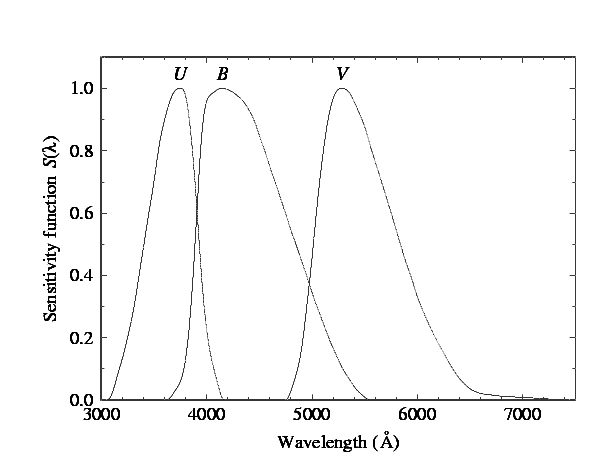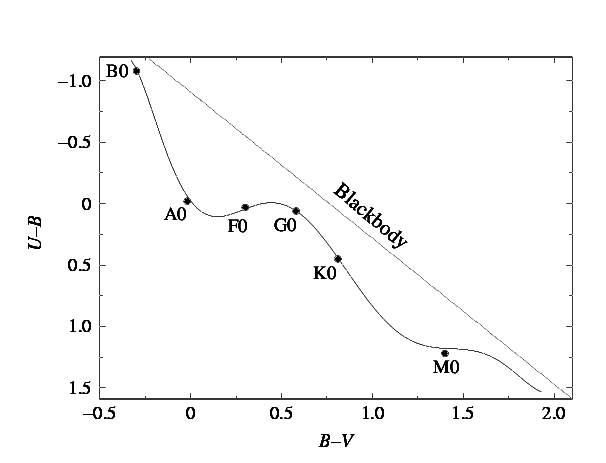Star Colors and the Color Index
The total luminosity is a measure of all the energy the star
puts out over all wavelengths, from the far infrared to the extreme ultraviolet.
Astronomers refer to this as the star's bolometric
luminosity.
But that's not what we observe. A single detector is not
sensitive to all wavelengths, so we typically only observe a fraction of
the star's luminosity. The star's luminosity is typically measured in different,
well-defined spectral regions, for example using the UBV(RI)
filter system.

For example, Sirius:
Sirius' Magnitudes
|
U
|
-1.50
|
|
B
|
-1.46
|
|
V
|
-1.46
|
-
which filter is Sirius brightest in?
-
what color is Sirius?
We define a color index as a difference of magnitudes, ie
the U-B color index, or the B-V color index. For Sirius, these would be:
Sirius' Color Indices
|
U-B
|
-0.04
|
|
B-V
|
0.00
|
Conventions:
-
always list the bluer magnitude first (ie U-B, B-V, V-I,
etc...)
-
thus, smaller values mean bluer stars
Okay, here's a cute
applet
to play around with which explores blackbody radiation and the color indices.
The Bolometric Correction
So how do we measure the bolometric magnitude of a star?
We usually don't! We measure the magnitude of the star in
some filter (say, V) and apply a bolometric correction,
ie:

For example, we said the (bolometric) absolute magnitude
for the Sun was M = 4.76. It's absolute V magnitude is 4.83, so its bolometric
correction is BC=4.76-4.83=-0.07.
-
What factors does the bolometric correction depend
on?
-
Why is the bolometric correction (almost) always negative?
The Color-Color Diagram
We can plot stars on a color-color diagram, which looks like
this:

-
where are the blue stars?
-
where are the red stars?
-
why don't they follow the blackbody curve exactly?


